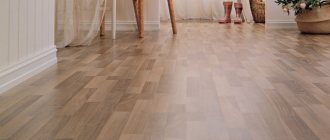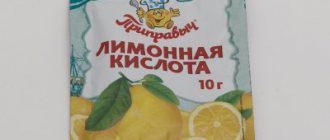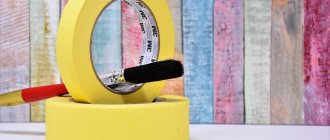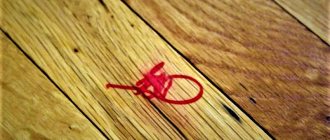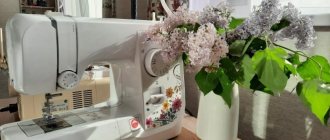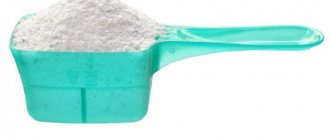Linoleum is one of the popular coatings. It has a number of advantages that allow it to be used in any room and to select the appropriate option for any interior. When purchasing a product, you can see various symbols on the packaging indicating its class. Even at the selection stage, you should figure out what the class of linoleum says, what it is like, and what needs to be taken into account to purchase quality material.
Linoleum is distinguished by its affordable price, ease of installation, ease of maintenance and a wide range of colors and models for rooms for a wide variety of purposes.
What is linoleum class
It is worth understanding what a class of linoleum is. You can see a two-digit number on the packaging. It indicates the strength and wear resistance of the material. This information will allow you to understand where and under what conditions the product can be used. This is his class. Some types are suitable only for industrial premises, others can be laid in residential premises.
Practicality and wear resistance are the main advantageous characteristics of linoleum.
The classes are as follows:
- 21. It is soft, but is only suitable for short-term use and only for the bedroom;
- 22 and 23. They have good strength indicators. Suitable for high traffic areas, including the hallway;
- 31. Suitable for public spaces, such as a hotel room, reception area. It has good wear resistance and lasts a long time;
- 32. Suitable for high-traffic areas, including kindergarten, hospital;
- 33. The most durable type of product. It is difficult to damage, even under high loads it will last about 10 years.
Thanks to modern production technologies, linoleum can look similar to parquet boards, laminate and ceramic tiles.
There is also a 34 class used in cinemas and airport lounges. There are also industrial types of linoleum, marked 41 and 42. They are so strong that they can withstand a moving vehicle.
Even the most capricious buyer will be able to make his choice.
Additional Information! The indicated designations refer to the manufacturers' recommendations for the use of the coating. You can put a thick type of product in the bedroom, but this will not be advisable.
Which laminate is better to choose?
Wear resistance is the most important parameter by which you can determine how long a particular floor covering will serve you. A certain class of wear resistance is assigned to a floor covering after a series of tests, during which resistance to abrasion, scratches, falling heavy objects and other troubles that may await the floor covering during its operation is checked.
⇒ According to the generally accepted system of classification of floor coverings, there are ten classes of wear resistance - from 21 to 43. The first numbers in the index indicate the type of room, the second - the trafficability of the room. So the first number 2 means that the coating is created for residential premises, 3 - office, 4 - commercial areas with increased load. The second digit of the index can also be 1, 2 or 3 (on the marking it is sometimes replaced by a pictogram in the form of one, two or three men). 1 - low traffic, 2 - moderate, 3 - high traffic indoors.
Residential flooring
⇒ The first digit of the index is 2, which can be replaced by an icon in the form of a house. Such coatings are intended exclusively for use in residential premises and are not designed for high loads.
class 21 - domestic premises with low traffic levels, such as bedrooms, offices;
class 22 - suitable, for example, for living rooms;
to class 23 - can also be used in living rooms, may be suitable for the hallway and corridor in an apartment where no more than one or two people live.
Floor coverings for office premises
⇒ The first digit of the index is 3, sometimes replaced by a pictogram symbolizing the office. Such floor coverings are the most widely used due to their versatility. They are suitable for the office and will last a long time in residential areas.
class 31 - offices with a small number of employees, as well as various residential premises;
class 32 - premises in offices with an average level of load, for example, meeting rooms, executive offices, kitchens, hallways, corridors in residential premises;
class 33 - offices with medium load, educational institutions, residential premises with increased load;
class 34 - durable floor coverings for premises with a high level of traffic and load on the floor: offices, shops, hotels, fitness centers, country houses, apartments.
Floor coverings for industrial premises
⇒ The first digit of the index is 4, sometimes the number is replaced by a pictogram symbolizing the plant. Floor coverings of 41, 42 and 43 wear resistance classes are intended for use in residential, office, retail, and industrial premises. They can withstand high loads and traffic, including those intended for use where warehouse equipment is used.
Classes of flooring on the Russian market
⇒ It should be borne in mind that in general the division into classes is somewhat arbitrary. So flooring for commercial use is great for home use. In fact, it’s all just a matter of cost - floor coverings intended exclusively for residential premises are much cheaper than their industrial counterparts. However, visually they may not differ in any way.
⇒ In Russia, floor coverings of classes 21 and 22 are very rare due to the extremely limited scope of their application and fragility. For example, class 23 serves in residential premises for only about 5 years and is not in high demand.
⇒ Floor coverings of 31–34 wear resistance classes are much more common. If we talk about use in an apartment or country house where the average family of 3-4 people lives, then coatings of class 31 last about 10 years, coatings of class 32 - up to 15 years, 33 - up to 15-20 years, and class 34 - over 20 years. Such floor coverings are the most versatile and enjoy deserved popularity among Russian consumers.
⇒ Coatings of classes 41, 42, and 43 can withstand high levels of loads and are most often purchased for commercial use. It should be noted that laminate in classes 41–43 is not produced at all, because it is technologically impossible to provide class-appropriate load resistance and strength to such a multi-layer floor covering as traditional laminate. Most often, industrial linoleum is produced in these classes.
Pros and cons of flooring
Linoleum has the following advantages:
- Low cost;
- Resistant to humid environments and steam;
- Wear-resistant. Tolerates physical activity well;
- Does not require a protective film, since it is already included in the product;
- Slip-resistant. Even those types that have a glossy surface;
- Can be connected to a heated floor system due to the ability to lay the product on a substrate;
- Variety of designs, colors. Can be matched to any interior;
- Easy to care for. No special cleaning products required.
When doing renovations, you should take the choice of flooring as seriously as possible.
But the coating also has disadvantages. Among them:
- Most products have an artificial composition. Due to non-natural components, the canvas has a specific odor;
- It is difficult to remove marks from shoes with black soles;
- A flat surface is required for installation.
If you decide on linoleum, know that there are several types of it, different in characteristics depending on the purpose of the room in which it will be used.
Can modern linoleum stretch during use?
Linoleums produced in past times had a similar drawback. The basis of modern floor coverings, generally referred to as “linoleum,” is fiberglass. This material is located in the middle of the transverse structure of the coating; it ensures reliable resistance of the coating to possible changes in geometric dimensions. Thanks to the presence of a layer of fiberglass, modern varieties of linoleum do not stretch or shrink. Coverings that do not contain fiberglass can still be found on sale today, but they are very easy to distinguish by the corresponding characteristics.
Classification by material of manufacture
The product is divided into groups depending on the material from which it is made and its composition. This affects the characteristics of the canvas and the features of its use.
Natural
It is distinguished by the presence of natural components. Often these include tree resin mixed with linseed oil and cork meal. Previously, linoleum had only a natural composition. Then its derivatives with synthetic admixture appeared. The natural product is completely environmentally friendly, safe, wear-resistant. It also does not fade when exposed to sunlight. The disadvantage is the high cost compared to other types.
Natural linoleum is produced on the basis of natural woven and non-woven materials.
Glypthal (alkyd)
The material contains modified resins mixed with organic and inorganic fillers. It is characterized by durability, wear resistance, and good insulating properties. However, they become brittle in the cold when the temperature drops below 15°C.
Glyphthalic linoleum, or alkyd as it is also called, is made from alkyd resins, various fillers, and pigments.
Polyvinyl chloride
PVC canvas can consist of one or several layers, have a backing or not. Safe to use. It has good thermal insulation properties, is elastic, comes in many colors and is affordable.
Single-layer PVC linoleum is made from polyvinyl chloride granules.
Colloxylin (nitrocellulose)
Contains nitrocellulose. It has a smooth surface, tolerates moisture well, is flexible and comes in a wide range of colors. But at low temperatures it becomes brittle and flammable. Therefore, you should not use it in residential premises or educational institutions.
Colloxyline linoleum can be laid on the floors of premises for any purpose, the main thing is that they are equipped with ventilation.
Rubber (relin)
The structure of linoleum is two-layer. The lower part contains bitumen and crushed rubber. The top layer consists of rubber and dyes. It is possible to avoid excessively slippery surfaces thanks to the relief. Like other species, it tolerates temperature changes, humid environments and is elastic.
Relin is a flooring material consisting of two layers. The surface layer is rubber, made from natural rubber.
Separation by composition
Today, the linoleum manufacturing process is fundamentally reminiscent of the technology of yesteryear. Natural coatings are made from natural raw materials: linseed oil, resin, wood, cork and linoleum flour, limestone, colored and white pigments, jute fabric. The amount of binders in natural linoleum should not exceed 30%.
Linoleum made from natural ingredients is used in children's institutions and hospitals. This type of coating is also excellent for residential premises, as it is completely safe for health, wear-resistant, and due to the linseed oil included in the composition, it has a bactericidal effect.
Modern chemists have developed artificial materials that completely imitate natural ones and surpass them in many properties. One of them is linoleum, which was one of the first to be improved. Despite the fact that the name “linoleum” has been preserved and forever attached to this coating, it is correct to say “artificial linoleum”, since this is, in principle, a completely different material.
We recommend: Don't rush: there is a way to avoid paying for the removal of construction waste after renovation
PVC linoleum has a number of advantages over its natural counterpart. It is inexpensive, and anyone can afford to decorate the floor in an apartment with this material. The ease of installation and the wide range of shades and patterns used in the production of artificial linoleum are captivating. The coating retains heat well, does not electrify, and does not fade in the sun.
Technical characteristics of linoleum
The coating has a set of technical characteristics that allow it to be in demand. They need to be taken into account, as this affects suitability for use in various premises and performance characteristics.
Every buyer, coming to a finishing materials store, strives to purchase flooring that is of high quality and long service life.
Abrasion
This indicator reflects how quickly the top layer of the product will wear off. According to the level of abrasion, linoleum is divided into several classes:
- T. The most durable products that are erased by 0.08 mm;
- P. The coating wears off slightly;
- M. Medium abrasion;
- F. Will wear out a lot. Belongs to the category of the cheapest coatings.
The flooring material must be resistant to various types of damage.
Additional Information! Abrasion and wear resistance are not synonymous; they are different concepts. The first informs about the condition of the top layer of coating. Wear resistance reflects the condition of the entire thickness of linoleum.
The higher the load, the more durable the linoleum should be.
Wear resistance
Allows you to determine the reliability and strength of the material. It is regularly exposed to mechanical stress, including walking and jumping. All this worsens the condition of the product. And the wear resistance indicator will determine how long it can last. The class in this case depends on the thickness of the canvas. If it is a multi-layer type, then the parameters of the protective layer matter.
When choosing a canvas, you have the right to bend its edges, wrinkle the corners, make a notch with your fingernail - if the top layer is not deformed, then it has high strength and excellent quality.
Strength
Similar parameter to the previous one. Allows you to determine how much the canvas can withstand. Wear resistance and strength determine for what type of room and under what conditions a certain type can be used. For example, the kitchen and hallway are characterized by high traffic, the children's room is also actively subject to jumping and running, and the bedroom is a quieter place. The more mechanical stress and load on the floor there is in the room, the greater the strength of the canvas should be.
The thickness of only the top layer on which the design is applied and with which direct contact occurs during operation is considered.
Types of Fire Hazards
Important parameter. It determines how flammable a certain type of linoleum is. The type is determined based on the flammability, toxicity of the material, its combustibility, the degree of smoke and the speed of fire spread.
When choosing linoleum, pay attention to two parameters: flammability and smoke production.
The following groups are distinguished:
- KM1. First fire safety class. You can use a coating with such markings in places with large crowds of people, such as schools, hospitals. At home you can lay it in the kitchen or bedroom;
- KM2. Used in commercial premises. Often found in offices;
- KM3. Can be used in rooms where there is minimal load and low probability of fire;
- KM4. Similar to the previous option, low degree of fire safety;
- KM5. Products with this designation are most susceptible to fire and can cause serious harm.
Even if you select linoleum for your own apartment, you should remember your safety.
KM3 is quite suitable for a home, but for rooms with a high risk of fire, for example, a kitchen, it is better to choose class 1 or 2.
If there are no such markings on the product packaging, you should refer to the certificate, which must indicate all the information about the material.
It is worth studying such properties as flammability (difficult to ignite, moderately flammable and highly flammable) and toxicity of combustion products.
Thickness
The thickness depends on the base. The product can be of two types:
- No base. The coating does not have a backing. The maximum thickness is 1.5 mm. This type of covering must be laid on a flat surface. This type does not hide even minor floor defects. Therefore, the base must be even and smooth. A special feature is low resistance to deformation;
- With foam base. Suitable for rooms that need additional noise and heat insulation. Thickness is up to 5 mm. The disadvantage is the high probability of deformation under the influence of external factors.
In heterogeneous models, felt or jute is used as a base and as a layer. They provide thermal and noise insulation, which adds maximum comfort to the room.
Wear resistance
Studying the characteristics of floorings, taking into account the thickness of the protective layer, helps to choose a more suitable coating.
Which protective layer of linoleum is better and stronger? There are groups that determine the stages of wear of the finishing layer:
- Group T – with parameters = 0.08 mm (strong), capable of withstanding long-term and intense overloads, the movement of lightweight vehicles, industrial equipment and a large number of people.
- Group P – 0.15 mm (mediocre strength), will allow the use of furniture on small wheels.
- Group M – 0.3 mm (low strength), such flooring can be walked on in shoes.
- Group F – 0.6 mm (quickly abraded), will not withstand long-term abrasive load.
How to choose the thickness of the protective layer of linoleum for your home? Abrasion means how rapidly the coating thickness decreases under overload. As a rule, 0.25–0.3 mm is sufficient for home use. The width of the fabric is chosen so that when installed on a plane there are a maximum of two seams. It is best to choose rolls from the same batch, because they may differ in tone.
How to determine which protective layer of linoleum is better, what other indicators do you need to know? In addition to the batch number, class and production date, the manufacturer indicates on the tag additional characteristics of the product that are worth paying attention to. The flammability group is determined by numbers from 1 to 4; the higher the number, the greater the degree of fire safety. Combustion products can be toxic, the indicator is marked with the letter T1 (low toxic), T4 (super toxic). Thermal conductivity – from 0.33 to 0.186 W/(m*K).
Features of linoleum markings
The linoleum marking looks like a two-digit number on the packaging. The first number indicates the type of room for which this roll of covering can be used:
- 2. Suitable for residential premises, including apartments, cottages;
- 3. Used in public or administrative premises, including hospitals, cafes;
- 4. Suitable for industrial and technical spaces, such as warehouses, airports.
Types of linoleum can be divided according to purpose; accordingly, they are used in different areas, each of which imposes a certain number of requirements on one or another type of canvas.
The second number indicates the maximum load that the coating can withstand. There are 4 classes, ranging from low load to extremely heavy. Thus, marking 23 indicates that the product is suitable for a living room with high traffic, including a hallway. A 34 is used in the halls of train stations and airports.
Office linoleum is more durable, however, the range of ornaments is less rich.
Also, in addition to the markings, other information about the product is indicated on the packaging, including fire safety, the presence of an anti-slip layer, etc.
Linoleum base options
The basis of the floor covering is the base layer, on which the performance and thickness of the linoleum depend. The range includes products with foam and fabric backing. Manufacturers also produce coatings without a base. Let's look at the features of each option.
Foam base
The most common base for linoleum is foamed polyester. The average thickness of the base layer is 2.5-5 mm.
The foam base makes the flooring more dense and elastic. A material with this structure is suitable for rooms with heavy loads. It can also be installed in rooms with high humidity.
The main advantage of foam-based linoleum is that during the installation process you do not have to use a shock-absorbing substrate. The covering can be laid directly on the subfloor. Even if there are defects on the surface, the thickened material will successfully mask them.
PVC linoleum on a foam basis
Fabric base
The fabric base is jute or felt. This type of linoleum is usually slightly thinner than foam, but is considered a warmer floor covering.
Fabric-based material is not suitable for wet areas. Dampness of the bottom layer leads to the appearance of mold and mildew.
PVC linoleum on fabric basis
Without base
Linoleum without a base is a thin coating that is not equipped with a base layer. It can be a homogeneous layer or a combination of different materials. Prominent representatives of the category: relin, colloxylin coating and some types of PVC products.
Baseless floor finishes are popular due to their relatively low price. However, before installation, care must be taken to prepare the rough surface. It must be absolutely flat and dry.
PVC linoleum without base
Variety of flooring designs
One of the advantages of linoleum is the variety of its design. There are plain options, with patterns and designs. There are also types that imitate various materials, such as wood, marble, parquet boards, etc. This allows you to choose the right canvas for any room and interior.
Linoleum for the home has an optimal cost and a wide range of colors.
It is also worth remembering that light shades can visually expand the space and add more light. Dark colors “eat up” space. Therefore, they should be used in spacious rooms.
Application of flooring
Linoleum is divided into groups according to area of application. The following types exist:
- Domestic. The base can be foam or polyester. The thickness does not exceed 4 mm. Wide choice of designs, easy installation. The coating is soft and low cost. Under intensive load it will last no more than 2 years;
- Commercial. It has a high degree of wear resistance. Has a thick protective layer. Used primarily in public spaces. Has limited design choices;
- Semi-commercial. Similar in structure to the everyday look. The difference is a thicker protective layer. Suitable for offices, public spaces and rooms with high traffic;
- Special. Designed for specific conditions. For example, sports, covered with a bactericidal composition, a relief top layer, etc.
Industrial linoleum is the most durable; it can withstand heavy loads, the impact of heavy loads and moving vehicles.
Commercial
It has a number of differences, thanks to which it is considered one of the best in its family. This version of the product is the most optimal both in the apartment and in the office. It is made of non-foamed polyvinyl chloride, which allows the coating to be used in areas with maximum overloads. The surface is made of a special non-slip substance that ensures free, safe movement.
Which linoleum with a protective layer is best to lay in the office? The strongest of all classes are from 41 to 43, they are designed to withstand enormous overloads, while remaining in their original state without deforming. The homogeneous coating has a pattern that runs through the entire thickness of the layers, so such products retain their original appearance much longer. Unlike household linoleum, the thickness of the protective layer (transparency) of a commercial one will reach 0.8-1 mm, and the thicker the layer, the thinner the base will be. The antistatic coating allows it to be laid in server rooms with a large amount of electrical equipment. It is resistant to rotting, does not deform, and can withstand heavy objects. Coatings with antibacterial surfaces are preferred in clinics.
What class of linoleum is the best?
Many people are interested in which class of linoleum is the best. This cannot be determined with certainty. It all depends on the specific operating conditions:
- For the bedroom, a household type with a marking of 23 and a thickness of 1.5 mm is suitable;
- In the nursery it is worth laying a thicker covering, at least 3 mm. Natural is better;
- For the living room, choose semi-commercial with a thickness of 2 mm;
- A product of class 33 or more is suitable for the kitchen and hallway. A commercial one is better for the hallway, but a household one is suitable for the kitchen.
When arranging the interior of your apartment, read the reviews, choose linoleum not only by its pleasant color and texture, but also by the characteristics of the inner and lower layers.
For rooms with high humidity, it is worth choosing products that are resistant to such an environment.
All information about linoleum must be indicated on the packaging and reflected in the certificate. Therefore, before purchasing, you should carefully study the coverage data in order to choose the most suitable option for specific conditions. Then it will last longer.
How to choose household linoleum
In order not to overpay for unnecessary characteristics, we understand the features and options. Linoleum for laying in apartment premises is not intended for high loads, therefore it is not practical to install moisture-resistant, flexible and elastic flooring in public places. The thickness of the protective layer of linoleum for the hallway and kitchen should be at least 0.3 mm. Such a coating shrinks during operation no more than 0.2 millimeters per 1 square meter. It can be smooth, glossy, rough, matte. It has a thickness of 1.5 to 3 mm and good sound insulation - up to 18 dB. Warm linoleum will be more convenient:
- in the bedroom, for an office it is better to choose 21st class linoleum;
- in the hallway and kitchen - 23rd or 24th class;
- for small families – 31st and 33rd grade.
A first-class synthetic, and especially natural product should not have any aroma. If you smell a pungent odor from the material, you can be sure that it is a bad product that may contain additives harmful to humans. For families with small children and animals, preference should be given to linoleum with antibacterial protection.
